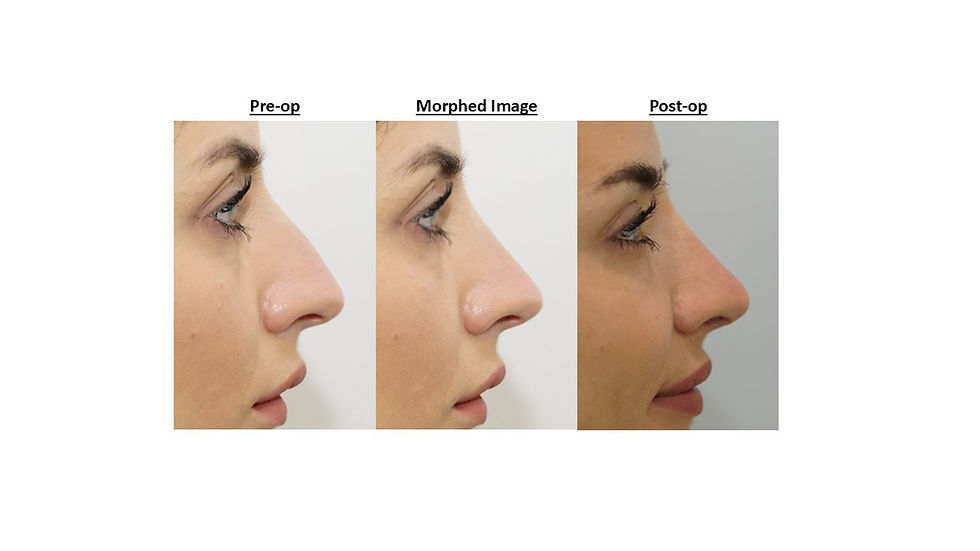Case Review: Piezo Dorsal Preservation Rhinoplasty (3 Month Result)
- mrtimbiggs4
- Oct 23
- 2 min read
Updated: 13 hours ago
This patient presented with an over-projected, drooping nasal tip, a prominent dorsal hump, and axis deviation of the nasal bones. The goal was to achieve a natural, refined result that balanced the nasal proportions with the rest of the face, while preserving function and nasal support.

Pre-operative Assessment
The nasal profile demonstrated a convex dorsum and a down-turned tip, which created a longer appearance on frontal and lateral views. There was also a subtle deviation of the bony pyramid contributing to asymmetry. Functionally, the patient had no significant airway obstruction, so this procedure was primarily cosmetic rhinoplasty with a focus on structural preservation.

Surgical Technique
An open approach dorsal preservation rhinoplasty was performed using piezo ultrasonic instrumentation. The surgery involved a high-strip, asymmetric, type III osteocartilaginous let-down technique. This approach allows controlled lowering of the nasal dorsum by releasing the upper lateral cartilages and preserving key midline support structures.
The Piezo device was used to sculpt the nasal bones with extreme precision, minimising soft-tissue trauma and bruising. This enabled the surgeon to fine-tune symmetry and smoothness while maintaining a stable dorsal aesthetic line.
The tip was refined and slightly up-rotated to balance the new dorsal contour and create a harmonious relationship between the dorsum, tip, and upper lip. A small degree of tip de-projection helped shorten the nasal profile while retaining natural definition.
Post-operative Course
Recovery was straightforward, with no nasal packing and minimal bruising. The patient returned to light activities within a week and resumed normal work after 10 days. At three months, the nose is settling beautifully, showing:
Gentle smoothing of the dorsal line
Correction of bony axis deviation
Refined, up-rotated nasal tip
Balanced, natural proportions
Barely visible external scars, consistent with fine open-approach healing
These results demonstrate how dorsal preservation combined with Piezo technology can deliver elegant, stable outcomes with minimal downtime and near-invisible scarring.

Surgical Principles Highlighted
High-strip dorsal preservation maintains the native bridge and continuity of the keystone area, reducing the risk of irregularities.
Asymmetric type III let-down allows precise correction of deviation while maintaining nasal width and support.
Piezo ultrasonic osteoplasty achieves delicate contouring with negligible trauma, improving accuracy and recovery.
Summary
At three months, this case shows a refined, balanced, and natural nasal contour with maintained airway function and minimal signs of surgery. The combination of piezo precision and dorsal preservation principles represents the modern evolution of aesthetic rhinoplasty, focused on preservation, predictability, and harmony rather than aggressive reduction.


